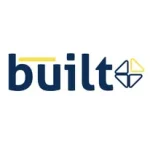
It is a widely known convention in accounting that a business is an entity, separate from its owner(s). It is also very essential for the survival of a business to separate the business transactions from that of your personal activities. However, a lot of sole proprietors withdraw cash and other assets from their businesses as and when they want, without using the appropriate approach for doing so. In this piece, we will explain effects of such drawings on your business.
Definition of Drawings
Drawings are the withdrawals of a sole proprietorship business assets by the owner for the owner’s personal use. The emphasis here is on using the money taken for personal work instead of business work. Small business owners normally justify drawings by saying that they do not take salaries.
Drawing account is an accounting record maintained to track money withdrawn from a business by its owners. A drawing account is used primarily for businesses that are taxed as sole proprietorship or partnerships.
A drawing account acts as a contra account to the business owners’ equity; an entry that debits the drawing account will have an offsetting credit to the cash account in the same amount.
For example, If the owner (Priscilla) draws GHS5,000 of cash from her business, the accounting entry will be a debit of GHS5,000 to the drawings account and a credit of GHS5,000 to the cash account.
Effects of Drawings on the Balance Sheet
1. First of all, your contribution to the business’ assets as an owner reduces. The owner’s drawings will affect the business’s balance sheet by decreasing the asset that is withdrawn and also, decrease in owner’s capital.
2. Also, any drawings especially in the form of cash means the business’ available cash will reduce. This affects the financing activities section of the cash flow statement.
3. However, the income statement is not affected by the owner’s drawings since the drawings are not business expenses. We have seen business owners treating drawings as expenses, but that is wrong.
Effects of Drawings on Taxes
Most small business owners think that draws reduces their tax liability. This is probably the most common misunderstanding about drawings. A draw doesn’t affect your taxes, either your personal taxes or your business taxes.
A business is taxed based on the profit or net income and a draw is not an expense. Hence, it doesn’t affect the income. From an accounting and tax purposes, a draw is a distribution of income.
Whether or not the income of the business is kept in the business or paid to the owners, the owner pays tax on the income, not the distribution.
From the above explained, it is necessary to keep business and personal spending separate if you have a small business. The owners draw should be the only place where personal and business funds intersect.












No Comments